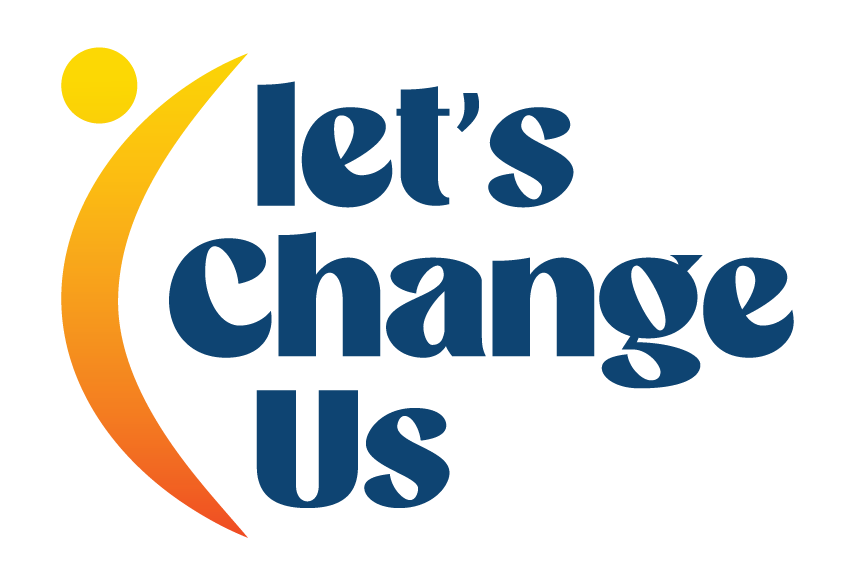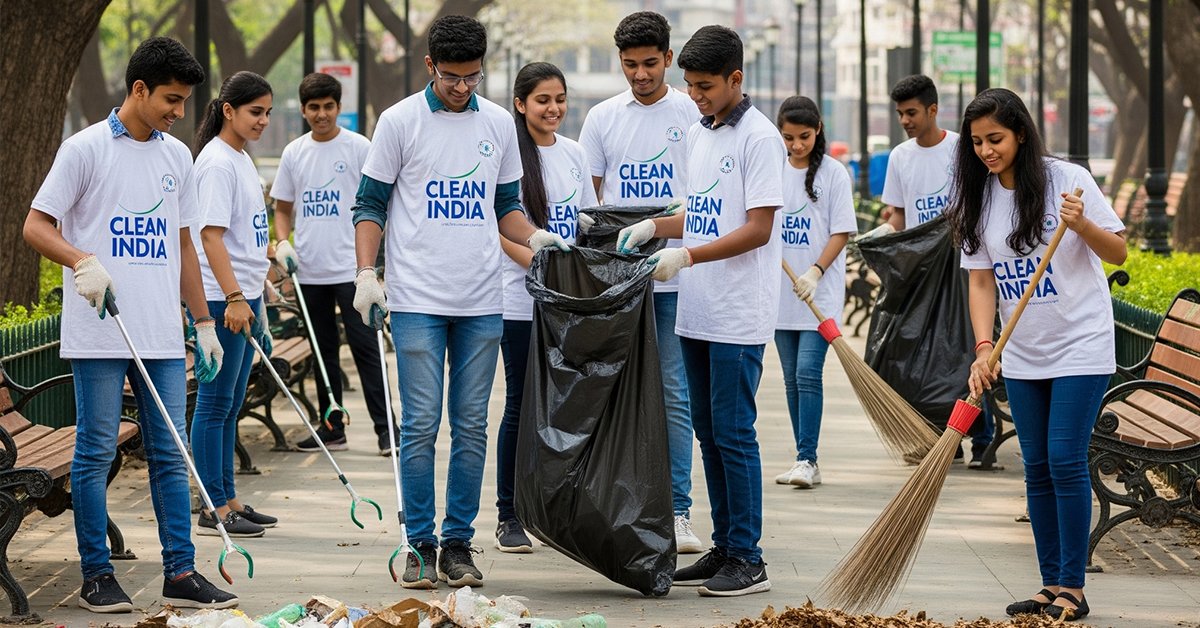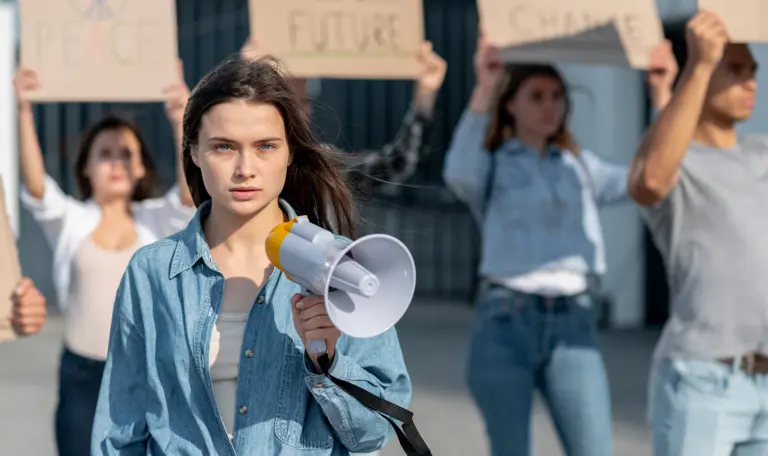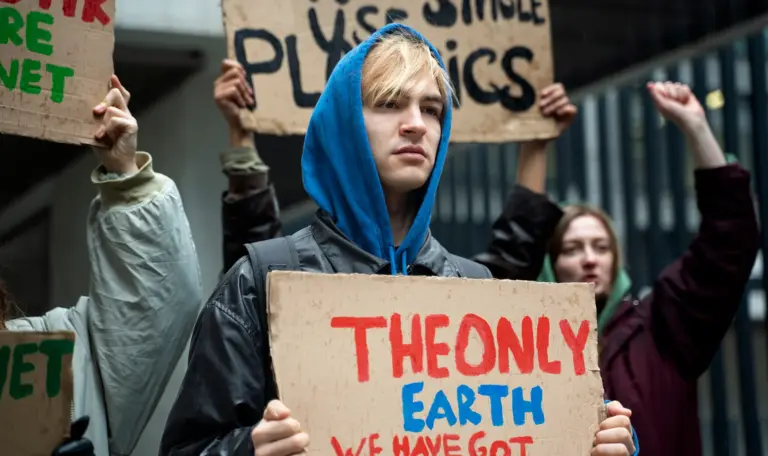Creative ideas for student-led community cleanup projects Mobilizing the youth is the most powerful force for driving social change. For students in India, participating in community cleanup projects is more than just a social service activity; it's a hands-on lesson in youth social responsibility and a direct contribution to the Swachh Bharat mission. However, to …
Creative ideas for student-led community cleanup projects
Mobilizing the youth is the most powerful force for driving social change. For students in India, participating in community cleanup projects is more than just a social service activity; it’s a hands-on lesson in youth social responsibility and a direct contribution to the Swachh Bharat mission. However, to keep students truly engaged, we need to move beyond simple garbage collection. This article offers 10 creative, impactful, and fun ideas for student-led community cleanup projects that can transform any locality, from the bustling streets of Chhatrapati Sambhajinagar to the quietest village.
Why Creativity Matters in Community Service
Creative projects are more engaging, attract more volunteers, and generate greater public awareness. They turn a chore into a mission, fostering a deeper sense of ownership and pride among students. Here are 10 ideas to get you started:
1. The “Trash to Treasure” Art Challenge
Transform a cleanup drive into an art competition. Students collect non-biodegradable waste like plastic bottles, wrappers, and bottle caps, and then use these materials to create sculptures and installations. The final artworks can be displayed in a public space, sending a powerful message about recycling and upcycling.
2. The “Wall of Change” Beautification Drive
Identify a public wall in your locality that is frequently defaced or used for spitting. After thoroughly cleaning the wall with community support, student groups can paint it with vibrant murals depicting local culture, positive social messages, or environmental themes. This not only cleans the space but also deters future defacement.
3. The “Adopt-a-Spot” Guardianship Program
This is one of the core ideas behind our project, Mera Shehar, Meri Pehchan. Student teams can formally “adopt” a small local area—a park, a bus stop, or a stretch of road—for an entire academic year. Their responsibility includes regular cleaning, planting saplings, and ensuring the spot remains beautiful, fostering long-term ownership.
4. The “Eco-Brick” Initiative
Eco-bricks are plastic bottles packed tightly with clean, non-biodegradable waste. They are surprisingly strong and can be used as building materials for small structures like benches, planters, or boundary walls in community gardens. This project provides a tangible and useful outcome for plastic waste.
5. The “Cleanliness Detectives” Audit
Students can form teams of “Cleanliness Detectives” to survey their local area. They can identify “grot spots” (chronically dirty areas), map the availability of public dustbins, and check for issues like open drains. This data can be compiled into a formal report and presented to the local municipal corporation, turning students into active participants in civic governance.
6. The “Seed Bomb” Brigade
For cleaning up barren or neglected patches of land, combine cleanup with greening. After clearing the area of waste, students can make “seed bombs”—balls of soil, compost, and native seeds—and disperse them across the area. When the monsoon arrives, these spots can transform into green patches.
7. The “Plogging” Event
Combine fitness with cleanliness. “Plogging” is a Swedish concept that involves picking up litter while jogging. Students can organize a weekend plogging event in a local park or along a popular walking route. It’s a fun, healthy, and highly visible activity that attracts community attention.
8. The Digital Cleanup Campaign
Civic responsibility extends online. Students can run a digital campaign to “clean up” their local social media spaces by reporting misinformation, promoting positive local stories, and running an online photo campaign showcasing the “Cleanest Corners” of their city to inspire others.
9. The “Waste Segregation” Champions Workshop
Student volunteers can go door-to-door in their neighborhoods or set up stalls in local markets to run interactive workshops on how to segregate waste into wet, dry, and hazardous categories. They can use simple games and charts to educate residents, driving change at the household level.
10. The “Recycle Regatta”
For communities near a river or lake, this is a highly engaging event. After cleaning a section of the water body and its banks, students can hold a “regatta” where they build small, unsinkable rafts and boats entirely out of recycled plastic bottles and other waste materials collected during the cleanup.
Conclusion:
These creative ideas for student-led community cleanup projects show that making a difference can be exciting and innovative. By empowering students to think outside the box, we not only get cleaner communities but also nurture a generation of proactive, problem-solving citizens who are proud to take ownership of their environment. Let’s encourage our youth to not just clean India, but to creatively reimagine it.






